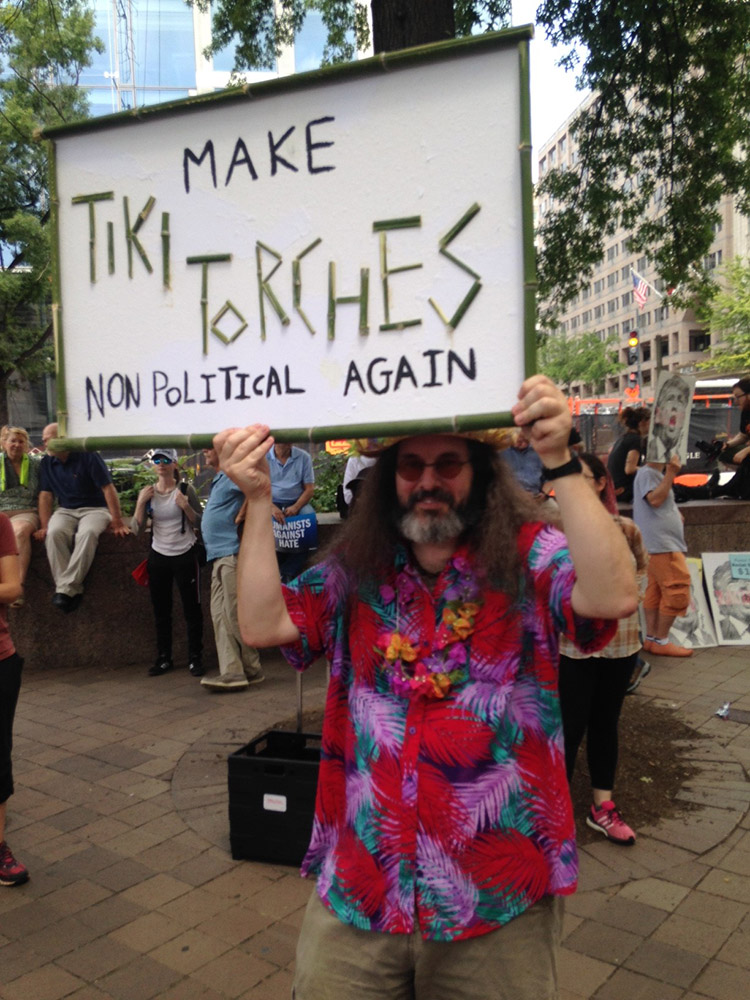A Tale of Two Rallies? Two (Slightly) Different Responses to Sunday’s Counterprotests
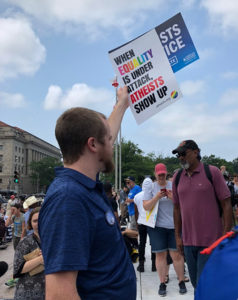
Part I
This weekend, the American Humanist Association was a visible presence at the Still Here, Still Strong rally, joining thousands of people at Freedom Plaza in Washington, DC, and marching to the White House where Unite the Right met to celebrate the first anniversary of the deadly demonstration in Charlottesville, Virginia. Our intent was to drown out messages of white supremacy and hate with ones of love, justice, and unity. As my colleague Abigail Ulman notes below, there was also a sizeable presence of anti-fascist groups whose message was decidedly more confrontational.
As the nation’s capital, so much of the news about Washington, DC, is echoed on a national scale, but if you turn past the first section of the newspaper, our metro sections publish stories of violence, homelessness, slumlords, greedy developers, and the people who mobilize against these injustices. The district is also where many of us at the AHA attend block parties, participate in local activism, and defend our neighbors. And so, through my eyes, Sunday’s events felt very local.
And this is why I think the rally was so successful at amplifying a unified message: white supremacy isn’t welcome here. Black lives matter here. Immigrants are welcome here. People of all faiths are at home here. And we will show up in the thousands to remind anyone who comes into our city looking to spread hate and violence that they have entered a city inhospitable to their vitriol. We will chant about love and justice. Children will have a space to participate safely and meaningfully. Local trans women, refugees, queer folx, disabled people, and Black women will hold the microphone to talk (from perspectives of their intersecting identities) about state violence, redistribution of resources, anti-Semitism, islamophobia, and fair housing. We will make human ladders to help people in and out of trees and we will chuckle at or nod in agreement with the clever signage on display. We will dance in the street. We will walk arm-in-arm to confront hate. I witnessed all of that Sunday, and it was a thing of beauty.
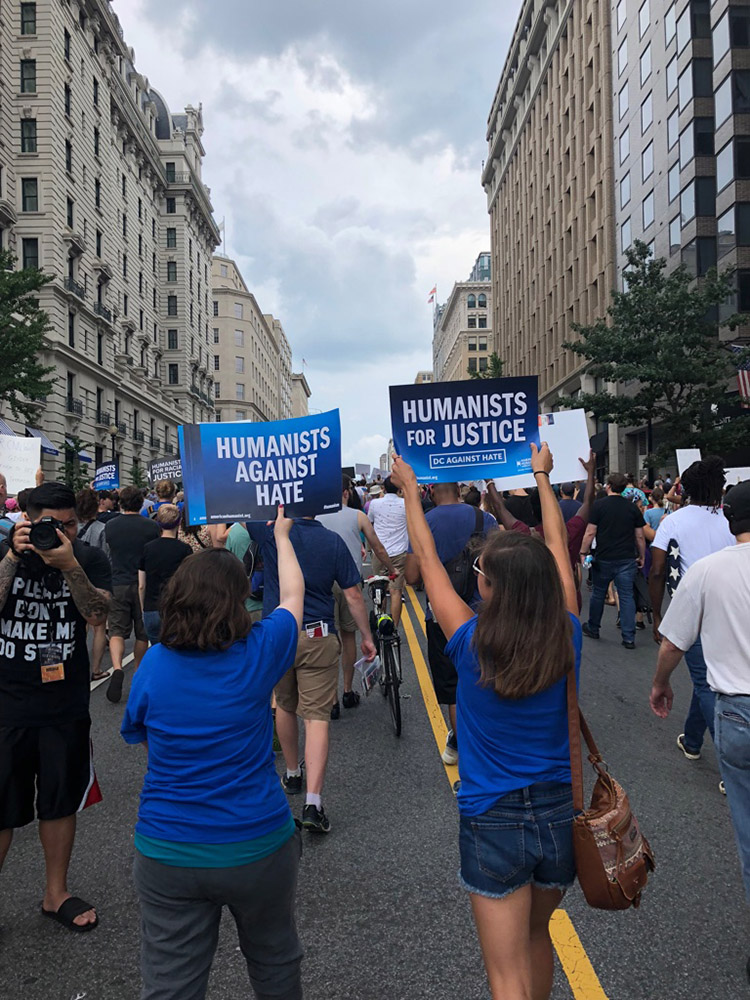 Simultaneously, less than forty Nazis, white supremacists, and fascists congregated in front of the White House for about twenty-five minutes before slinking, with a police escort, into white vans and disappearing into the rain.
Simultaneously, less than forty Nazis, white supremacists, and fascists congregated in front of the White House for about twenty-five minutes before slinking, with a police escort, into white vans and disappearing into the rain.
By then it wasn’t even about them, because after they left we stayed. We sang, we exchanged phone numbers and food, we made sure people had rides home, we were present and watchful at police confrontations, and we tidied up.
That wasn’t what made it into headlines as the sun rose on Monday, because news production and consumption is a business; outlets like CNN and the New York Times published photos and video of confrontations (often the same confrontation filmed from different angles), overestimated the numbers of antifa and protestors in riot gear (who I don’t disparage for protecting their bodies from potential violence), and generally ignored the Still Here, Still Strong rally, the march, and the much larger, peaceful demonstration on the other side of the park. But this is nothing new, and it won’t dissuade us from showing up.
Love doesn’t always win, and the work doesn’t stop when the white supremacists go home. The people leading the important fight for justice can only forge ahead if they have consistent access to resources and local ground support. AHA will continue to build partnerships with these organizations and join with our chapters to be present at local events, but I urge you to look into your own communities and give your time and resources to make the towns, cities, and neighborhoods you love inhospitable to hatred and injustice.
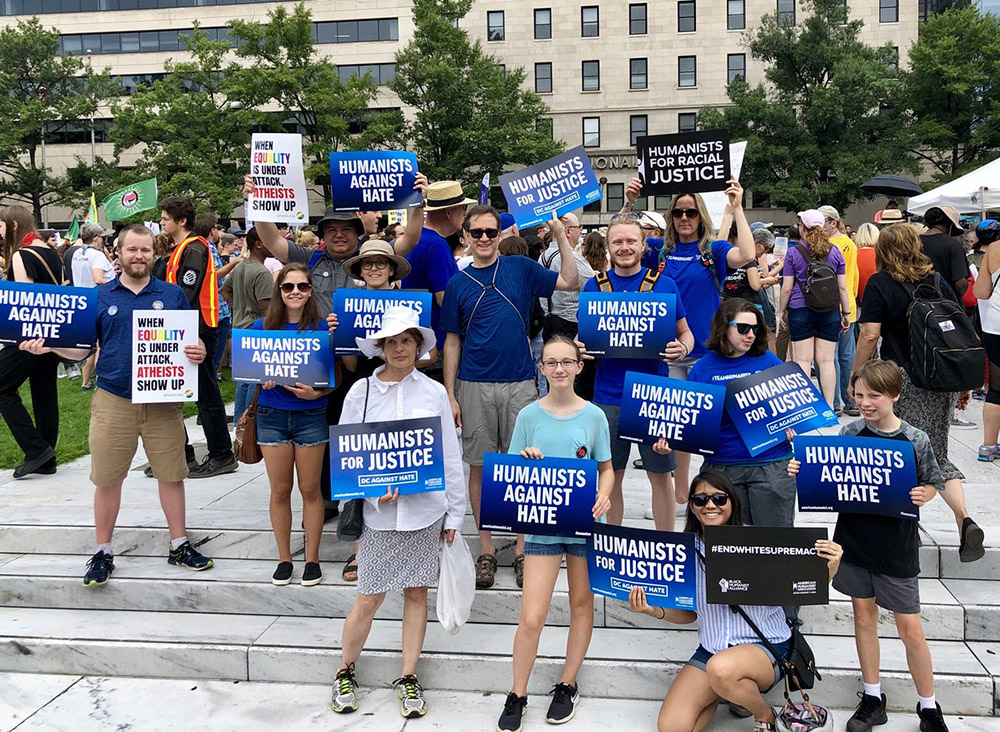
Part II
In the almost two years since Donald Trump was elected president, I have been to more protests, rallies, and marches than I can count. I spent the entirety of last summer organizing, mobilizing, protesting, and rallying to save the Affordable Care Act, going to at least one event per week until the numerous repeal and replace bills were finally voted down once and for all. However, yesterday’s counterprotest of the alt-right, neo-Nazi, white supremacist Unite the Right 2 rally felt different.
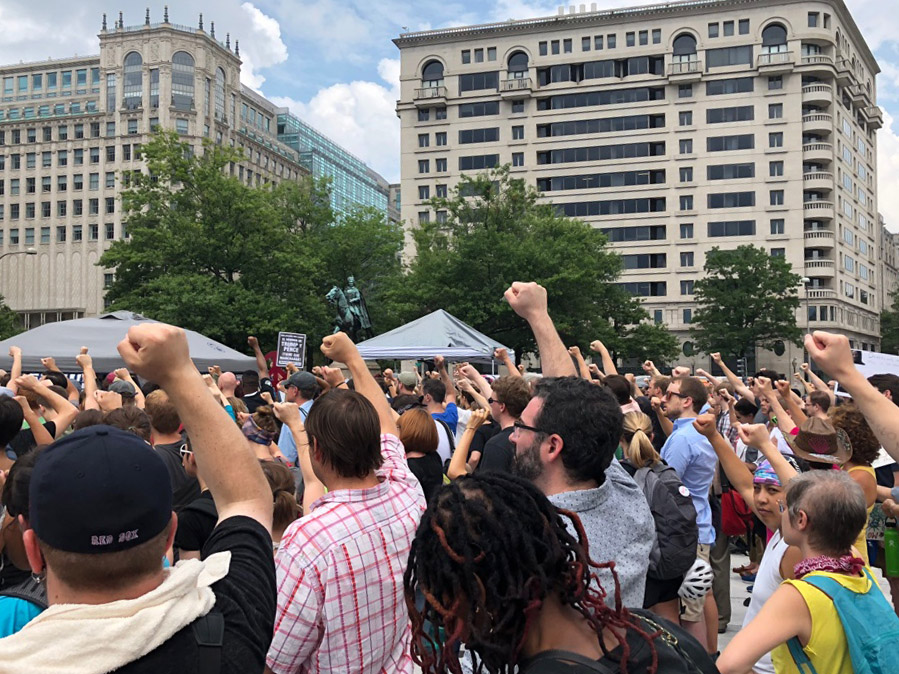 When I mentioned to friends, many of whom are social justice organizers and veteran protestors themselves, that I was going to the rally organized by Shut It Down DC, they cautioned me against going and told me to stay safe. At the event, I felt a tension not present in previous rallies, and the memory of the violence that occurred in Charlottesville one year before was ever present. As I got off the bus to walk the four blocks to Freedom Plaza, I glimpsed a group of counterprotestors dressed in all black, carrying signs and protective gear. The upbeat expressions of solidarity and optimism I had experienced at previous marches was offset by those who appeared ready to put their health and safety on the line to fight for justice.
When I mentioned to friends, many of whom are social justice organizers and veteran protestors themselves, that I was going to the rally organized by Shut It Down DC, they cautioned me against going and told me to stay safe. At the event, I felt a tension not present in previous rallies, and the memory of the violence that occurred in Charlottesville one year before was ever present. As I got off the bus to walk the four blocks to Freedom Plaza, I glimpsed a group of counterprotestors dressed in all black, carrying signs and protective gear. The upbeat expressions of solidarity and optimism I had experienced at previous marches was offset by those who appeared ready to put their health and safety on the line to fight for justice.
At the Still Here, Still Strong rally itself, almost all the speakers were people of color—black, brown, and native, some queer and trans—who told stories about their struggles to make ends meet and about the discrimination and violence they had faced simply because of their existence. I didn’t see any pink pussy hats here; this was a radical group of people, the rally website declared, whose “very existence is resistance” and “who will be there in peace and solidarity, but who will not back down.” Organizing groups included anarchist groups and antifascist coalitions, international communist and socialist organizations, Black Lives Matter, No Justice No Pride, Occupy Wall St., the Black Youth Project, and Showing Up for Racial Justice, among others. As we marched toward Lafayette Square and the official Unite the Right 2 rally location, word traveled that only about thirty white supremacists had showed up. We outnumbered them by the thousands and their “protest” looked laughable.
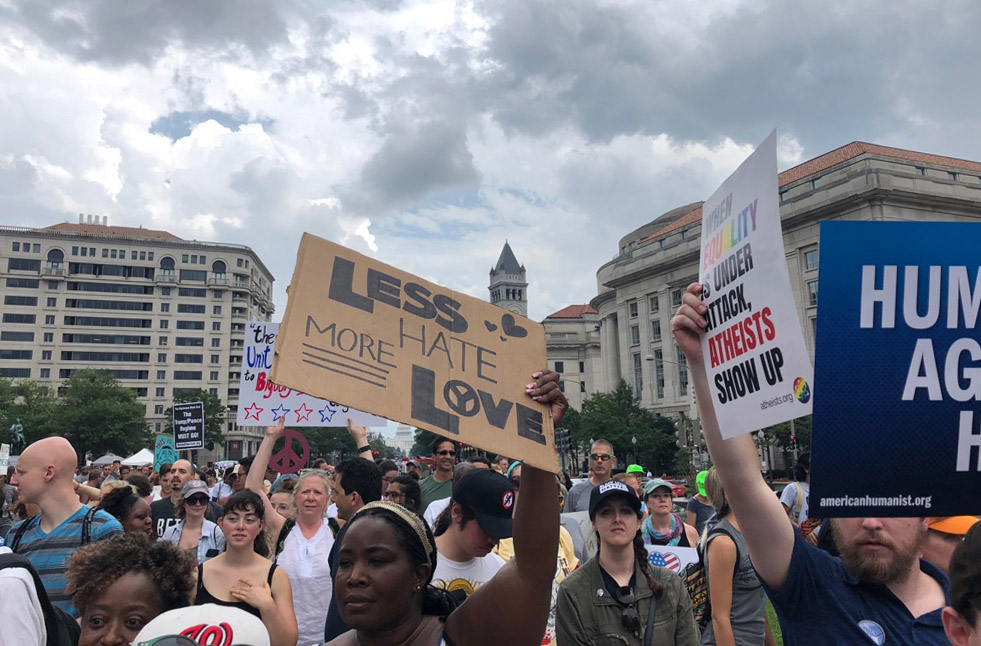 Still Here, Still Strong wasn’t just a slogan or a trendy Instagram post. This was a continuation of people fighting for their lives. As one speaker acknowledged, there were many who couldn’t afford to come to the protest because they had to work to provide for their families or because they couldn’t risk arrest. As a white woman, I understood the privilege I had in being able to attend, not fear the police, and afford bail if it came to that. I was glad I could stand in solidarity with people who did this every day and not just when it included celebrity speakers.
Still Here, Still Strong wasn’t just a slogan or a trendy Instagram post. This was a continuation of people fighting for their lives. As one speaker acknowledged, there were many who couldn’t afford to come to the protest because they had to work to provide for their families or because they couldn’t risk arrest. As a white woman, I understood the privilege I had in being able to attend, not fear the police, and afford bail if it came to that. I was glad I could stand in solidarity with people who did this every day and not just when it included celebrity speakers.
On Sunday, radical community organizers and other residents of DC who’ve faced violence and threats beginning long before November 2016 shut down the neo-Nazis in the nation’s capital. As my colleague Rachel Deitch touched on, national marches are exhilarating, but the real work gets done when we mobilize within our communities every day, recognize that entrenched racist, patriarchal power structures have existed far too long, and use the experiences and expertise of the people on the ground to create change. Constantly being present and there for local resistance is the only way, as one speaker eloquently put it yesterday, that we “will be the generation that does not just protest the Far Right. We will be the generation that defeats the Far Right.”
